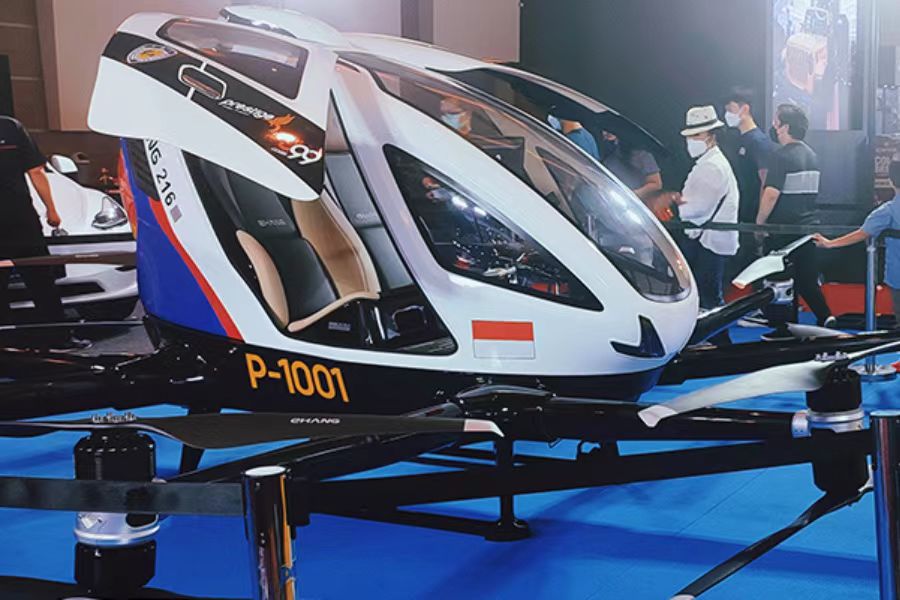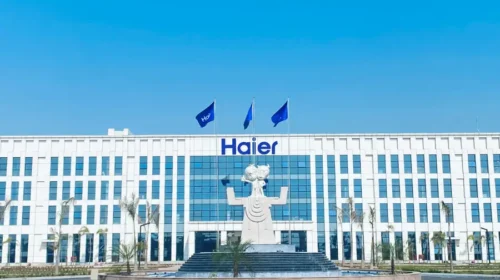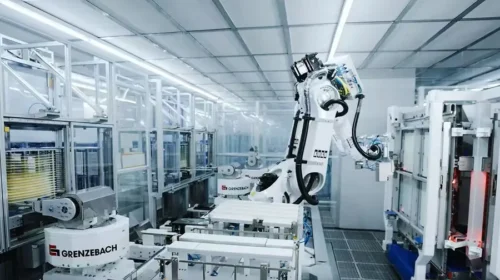EHang ready for takeoff?

The company said it has conducted more than 90% of tests needed to have its autonomous aerial vehicles certified in China, and it expects to finish remaining tests ‘in the near term’
Key Takeaways:
- EHang said its autonomous aerial vehicles are close to completing necessary tests to be certified by China’s aviation regulator
- The company’s revenue quadrupled in the first quarter, but is still relatively modest compared with the big sales that would come if and when its vehicles get regulatory approval
By Doug Young
Today we point our radar at EHang Holdings Ltd. (EH.US), a company that has tantalized investors with stories of the big potential for its autonomous aerial vehicles (AAVs) since its New York listing in 2019. Now, the company is asking those investors to hold on just a little longer, telling them in its latest quarterly results that it’s almost ready to take off.
EHang is active in a number of markets, including Indonesia, Japan and Malaysia, where it has found customers for its small autonomously piloted planes that are used for tourism in scenic spots and also for delivering goods. But its most promising market is its home base in China, where it has conducted tests at 19 trial operational sites in 17 cities over the last two years.
Now, the company just needs to have its EH216 series of AAVs certified as flightworthy by China’s aviation regulator. EHang said it currently has firm orders for more than 100 of its AAVs from Chinese customers whose actual delivery hinges on getting such certification.
The company said it made “significant progress” in the final demonstration and verification phase for the EH216 series in the first quarter, with more than 90% of compliance tests it needs to do now completed. What’s more, it said it expects to “obtain the type certificate in the near future” for the EH216.
“For the remaining roughly 10% of the tests, we are in the final sprint, and expect to finish them as soon as possible in the near term,” COO Fang Xin said on the company’s earnings call, responding to an analyst’s question about a timeline for the completion of testing. “At this stage, we do not see any major obstacles, as we have already overcome the most difficulties. And our test work in this final phase is essentially a matter of time now.”
Perhaps the lack of a more concrete timeline disappointed some investors who were hoping for more specifics. Whatever the reason, EHang’s shares fell about 7% on Wednesday in New York after the results came out.
Even after that decline, the company is still a relative investor favorite among this kind of experimental new vehicle technology stock. It currently trades at a price-to-book (P/B) ratio of 33, far higher than the 1.85 for Germany’s Lilium (LILM.US), which, unlike EHang, has yet to record any significant revenue. Autonomous driving concept stocks TuSimple (TSP.US) and Aurora (AUR.US) also trade at far lower P/B ratios of just 0.25 and 1.06, respectively.
All of these new technologies are hugely risky bets, since they involve complex regulatory processes that can often ultimately kill the project. There’s also the potential for internal company problems to arise, which lately has derailed TuSimple, formerly one of the most promising players in the autonomous trucking space. And then there’s always the danger of running out of cash.
We haven’t seen any such internal rumblings yet in EHang, and the company generally looks quite steady and well-run in terms of product development and cost controls. Since its 2019 IPO when it sold shares for $12.50, the company’s American depositary shares (ADSs) have been remarkably steady in the $8 to $15 range, including its latest close at $10.01. That’s far better than the performance for most U.S.-listed Chinese stocks, which have taken a beating over that period due to U.S.-China tensions and regulatory issues that also apply to EHang.
Revenue takes off
All that said, we’ll spend the second half of this review with a flyby of EHang’s latest results, which reflect its stability and cost-consciousness, as it advances towards its ultimate goal of big sales that would come with regulatory approval.
The company posted 22.2 million yuan ($3.1 million) in revenue for the quarter, based on its delivery of 11 aerial vehicles during that period. The figure was roughly quadruple the 5.8 million yuan in revenue a year earlier, and was also up more than 40% from 15.7 million yuan in the previous quarter.
We can calculate from the figure that EHang is selling its vehicles for roughly 2 million yuan apiece, though that figure would likely come down a bit if individual customers actually start placing bulk orders for the dozens of AAVs each has promised to buy.
If we assume the company could sell around 40 vehicles in China each quarter if and when it gets regulatory approval, that would translate to quarterly revenue of nearly 70 million yuan, based on a discount of about 15% from the 2 million yuan price. That’s already nearly four times what the company recorded in the first quarter, though, again, everything is contingent on getting approval. Still, it does indicate the kind of potential for future sales.
Among the company’s other metrics, its ability to control costs is probably the most noteworthy as long as it continues to lose money. Its operating expenses totaled 91.5 million yuan in the latest quarter, up from the 68.2 million yuan a year earlier but down from 104 million yuan the previous quarter.
The company had about 218 million yuan in cash at the end of March, which includes a $10 million investment it received in the first quarter from a Qingdao government entity. The latest figure was down from 237 million yuan in cash a year ago, though EHang previously said the Qingdao government entity was prepared to invest another $10 million if necessary.
The bottom line was that EHang posted a net loss of 87 million yuan for the quarter, slightly bigger than the 68.8 million yuan a year earlier. But on an adjusted basis, which typically strips out non-cash costs related to employee stock-based compensation, the company’s non-GAAP net loss actually narrowed to a smaller 33.6 million yuan from 40.9 million yuan a year earlier.
At the end of the day, EHang’s relatively high valuation does seem to reflect the fact that it’s on a steady track to its ultimate goal of producing commercially viable AAVs that could have huge sales potential, especially for tourism. Now the company just needs to reach the finish line with regulatory approval in China, which would almost certainly provide a large boost to its stock.
To subscribe to Bamboo Works free weekly newsletter, click here





